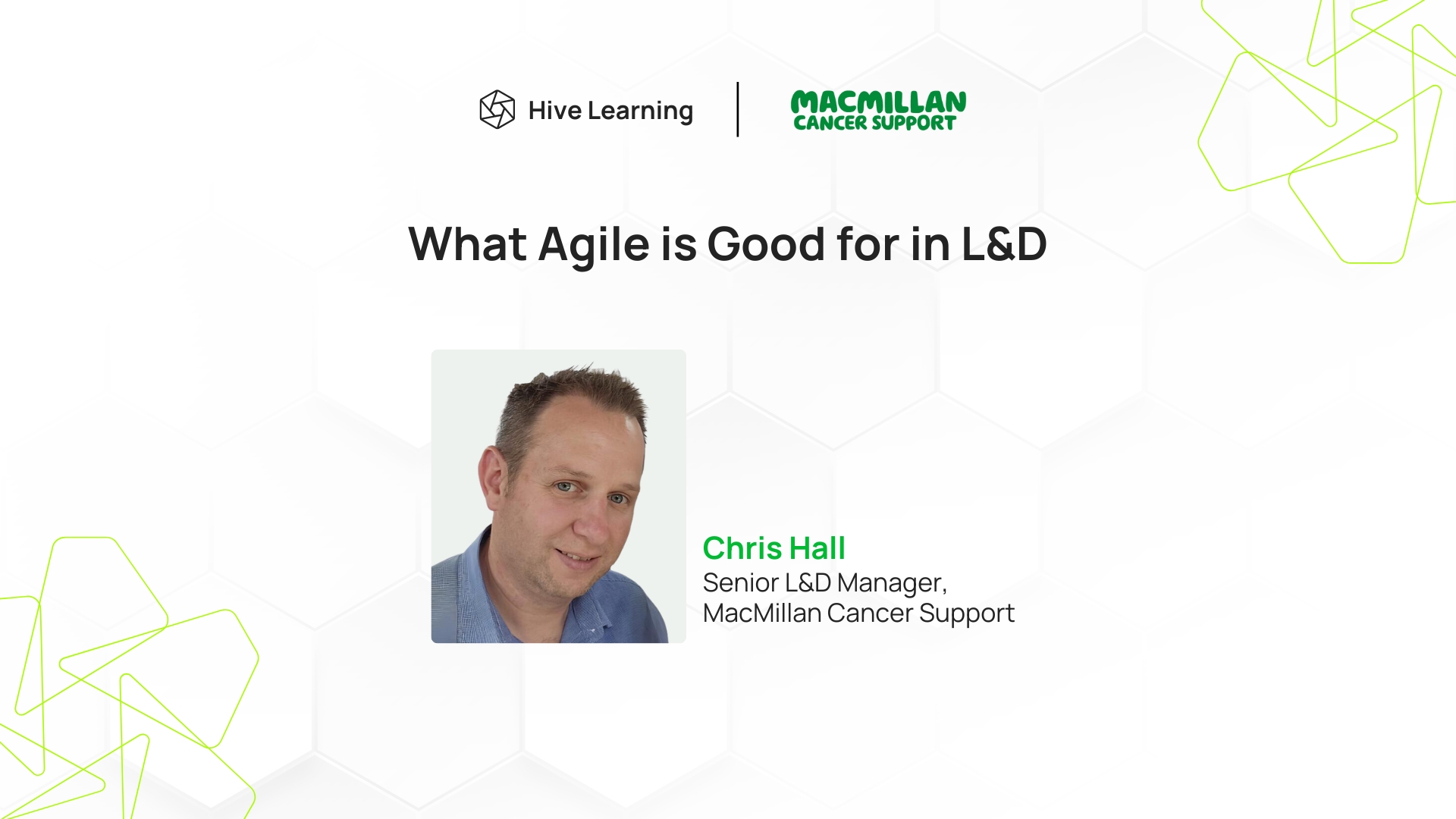This is a question I get asked a lot:
“I really like the idea of Agile, but it doesn’t work for everything does it?”
And I think my answer might surprise some of you.
Agile is good for everything and works for everything.
Already I can sense some head scratching and more than a hint of disbelief out there around this. So let me try to explain my stance.
Compared to the step-by-step nature of the old-school waterfall method, Agile is like a breath of fresh air for L&D. It’s all about being flexible and taking things one piece at a time.
This way, L&D teams can tweak their training at the best IT companies as they go, staying on their toes to keep up with what learners actually need. With Agile, learning stuff gets better and better because it’s always keeping up with the times and the people it’s meant to help.
What is Agile?
Let’s go back to the absolute fundamentals to start with. Agile is a set of 4 values which were created to help software development teams when working on complex, ever changing and ambiguous projects. The 4 values are as follows:
- Individuals and interactions over processes and tools.
- Working software over comprehensive documentation.
- Customer collaboration over contract negotiation.
- Responding to change over following a plan.
Now looking at these values, which one’s aren’t going to work for everything? Maybe the 2nd one, but only because it specifically references software, if we substitute “products”, or even “things”, for “software” in the 2nd bullet point then it really does work for everything..
But Agile’s a lot more complicated than that?
This is where we hit the biggest hurdle – overcoming people’s preconceived notions of what Agile actually is. When people hear the word Agile, they get whisked away to a place full of sprints and kanbans, of daily stand ups and retrospectives and so much more besides. Essentially, there’s a conflation of Agile with Scrum. Don’t get me wrong, Scrum is an important framework and provides a means to implement this Agile philosophy within teams, but it’s an additional layer to Agile and moves beyond the basic Agile philosophy.
Agile is a mindset, a culture, a different way of thinking about and approaching complex problems and projects. Everything else is just different ways to embed this new way of thinking and working.
Unfortunately, like most things that hold value and work, Agile has become a big cash cow for many. With more teams and organisations than ever taking an interest in working with agility, there’s money to be made in consultancy and training all things Agile. A whole industry has sprung up offering a range of qualifications and a variety of frameworks you and your team can be accredited in. As with all of these things, once people have the basics worked out, providers then introduce ever more complex frameworks and levels and tiers to keep the money rolling in.
So how do I go about becoming more Agile?
The best advice I ever got as an expectant father was from my sister-in-law, she said to me, “find what’s right for you and your little family and just do that,” in dealing with newborns and starting families, you find everyone has some awesome advice, something that worked for them without fail and that you should definitely be doing. Agile is the same. Everyone will tell you how you should do it and what works and what doesn’t work.
But just like my small little family, you and your circumstances are unique – what’s worked elsewhere might not work for you, and what works for you might not work elsewhere. So, listen and take in all the advice you can, do some reading and find some interesting case studies from similar teams or organisations to yours. But then work out what’s right for you in your context, in your here and now.
How do you find what’s right for you?
You adopt an Agile mindset and start experimenting!
The first few weeks and months that my team and I experimented with Agile were interesting to say the least! We tried lots of different approaches, some worked, and we kept them, others we dropped really quickly. Crucially though, we all went in with a mindset of “we’re not going to get this totally right first time,” and we were prepared to take the time in our retrospectives to be really honest and open about what was and what wasn’t working for us and make changes quickly in response to that feedback.
Remember, Agile is a mindset. Adopt the right mindset and then set about creating your own model for how you’re going to work in this new way, co-create it together, pick and mix from the approaches and tools out there, and test it and improve on it as if it were a product you were working on to find what’s going to work for you in your circumstances.
More Articles
Book a demo today
Discover the power of Hive Learning:
Simplify, Streamline, and Succeed
